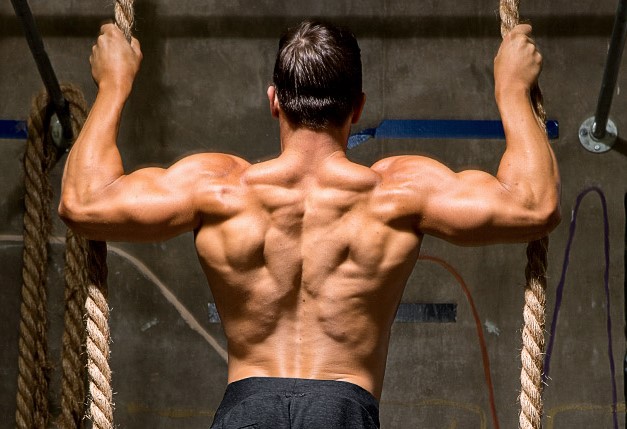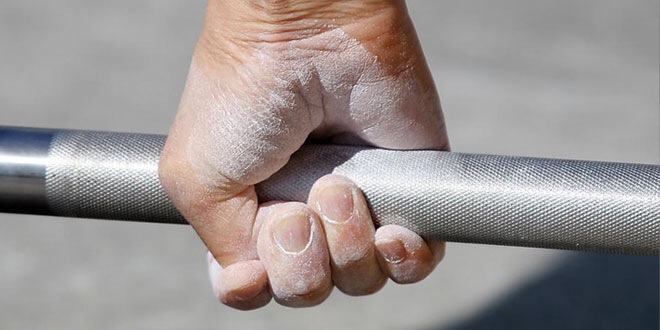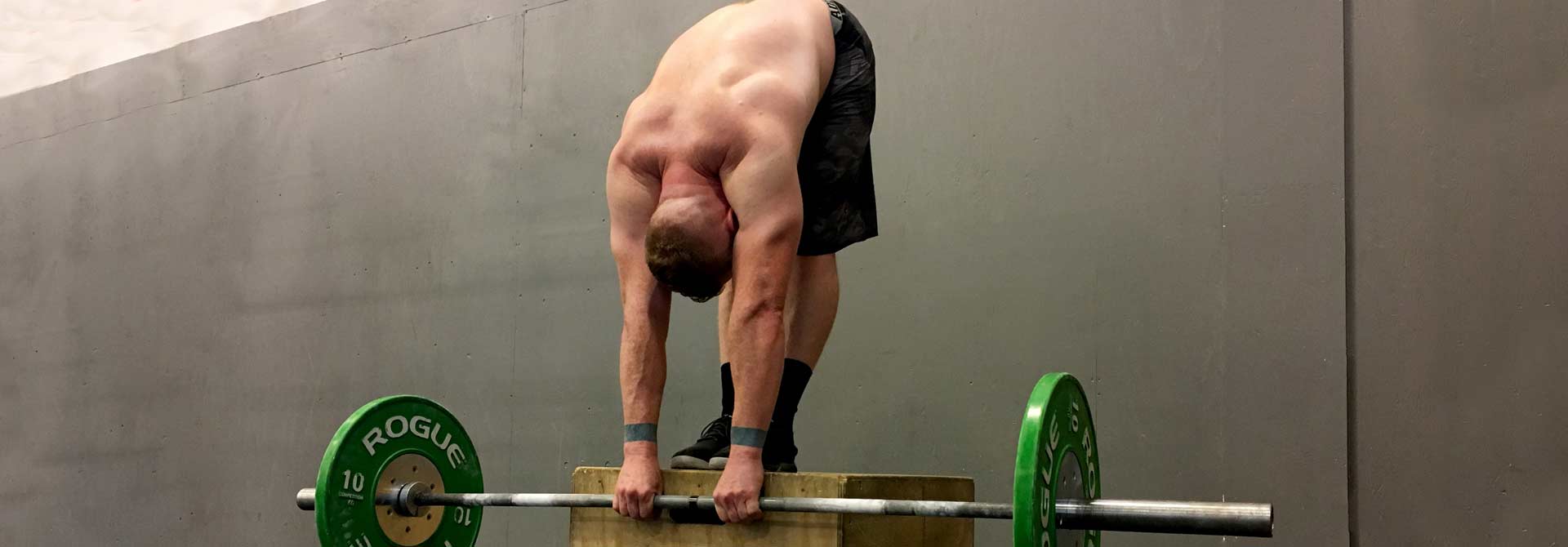The squat is often seen as a leg exercise, but your quads and hammies are just a single part in a larger equation. To move a lot of weight up from the bottom position, you need to engage and brace your core and upper back, maintain an open chest through strong thoracic extension, and have the shoulder mobility to safely keep the barbell on your back or traps without compromising your wrists.
It’s a demanding movement, and I haven’t even gone into the significant amount of work your erectors, glutes, and calves put in while you squat. But when it comes to novice squatters, chances are that your quads aren’t the issue. You might even have strong hamstrings and glutes, depending on your history as an athlete or active individual. What a lot of people lack as the weight piles up and you get closer and closer to your max weight is the back strength to maintain a perfectly protected and upright spine, alongside an open chest to keep your upper body from pinching your hips and putting your spine under increasing amounts of pressure.
Why a Strong Upper Back is Important
Most people struggle with weakness (and potentially pain) in the upper back due to hours spent with a rounded back, rounded shoulders, and weakening upper back muscles. Thick backs aren’t built by sitting around and lifting heavy without a solid foundation or with frequent form breakdown is sure to lead to a sore and painful back after a squat session. They’re built through a dedicated pull-heavy program.
It’s not just your squat. Your deadlift is severely limited by a weak upper back, and a weak back in general. Your bench likes wide and strong lats and rear delts. A lot of people blame rounded backs on weak erectors, but your lats and traps play a role in keeping your spine safe and your back upright while you lift, as well.
A strong deadlift requires a bulletproof back – so even if your squat is perfect, building strength around the thoracic spine can prevent upper back pain, improve your performance in the deadlift, and for all the aesthetically-minded individuals, a stronger upper back is key to a thick physique and a better frame.
Thoracic Mobility
Increasing thoracic mobility will be the first step toward improving the strength, stability, and thickness of your upper back. To check whether you have adequate upper back mobility (thoracic mobility), simply get into a front rack position for the front squat. To do so, tighten your core and keep your hips and spine neutral, while opening up your chest and flexing your thoracic spine to create a shelf for the bar to sit on.
This shelf would include your anterior deltoid and the upper head of your chest muscles. Your elbows should be pointing forward, with your triceps roughly perpendicular to the floor. Your lumbar spine shouldn’t be flexed, your core should be tight, your glutes should be tight, and your lower back should be tight.
If you can maintain a front rack position, good job. You have the right amount of thoracic mobility. If you don’t, it’s time to work on that. Trust me – your rack position isn’t the result of tight triceps, and you need extremely inflexible wrists for your wrists to be a limiting factor.
The first thing you’ll want to do is incorporate the cat-cow movement into every single workout, as a form of prehab or as part of your warmup. Increasing thoracic mobility also improves your ability to push and press weight horizontally and overhead, and helps you unlock the ability to press weight behind your neck. It also helps remove a lot of nagging post-workout pain associated with a weak upper back.
Another great tip to open the upper back is to stretch the chest. Tight shoulders and chest muscles can be a cause for a tight back, as these muscles work hard to pull you inward and round your back, flexing the spine.
Stretches for the Upper Back
If necessary, use a foam roller or a lacrosse/tennis ball to further massage your shoulders and chest, improving your stretch significantly.
Wrestlers, BJJ practitioners, office workers, smartphone-addicted teens, and people who generally work with their hands a lot are going to need a lot of stretching to increase mobility in the upper back. Aside from cat-and-cow poses, try out different variations on thoracic extension via a wall or floor, keeping your arms up against a wall while slowly dragging your body down, maintaining contact with your arms and chest while keeping your lower spine neutral and your core tight to maximize flexion.
Building Strength
After ensuring adequate mobility, it’s time to build strength. There are a lot of ways to go here, so I’ll include a couple exercises that can be particularly helpful in increasing strength and thickness around your thoracic spine.
- Back Extensions – the easiest way to start these is on the floor. Lay on your stomach. You can keep your legs curled to eliminate hamstring involvement and minimize some glute activity. Then, simply lift your chest off the ground, with your hands on your head. Increase the difficulty with a plate. The idea is to focus on contracting the upper back to raise your chest off the ground while keeping your abs firmly on the floor. A better way to do this is on a back extension machine. You can curl your thoracic in at the bottom of each rep, provided you’re loading minimally. With greater loads, just maintain a straight back (but at that point, you’re putting a greater focus on the rest of the posterior chain).
- Good Mornings – Get into a squat position with a minimally-loaded barbell, then slowly bow forward while extending your hips back, and come back up, squeezing the upper back in the process. You can squat down while bowing over to avoid lumbar flexion and get your back into a parallel position, as per Torokhtiy. Do this without weight to begin with, just to test yourself on video if you’ve got the necessary mobility. Another excellent variation to train the upper back is a seated Good Morning. Keep your descent controlled and only go down as far as your lumbar spine (lower back) allows. Avoid rounding your back, for safety reasons.
- Seated Loaded Extensions – Similar to a Good Morning, but instead of loading the weight on your back, simply grip the barbell in front of you. Sit on the edge of a bench with a barbell in your hands, and roll and extend your upper back. A heavy kettlebell or chains work well, too.
- Back-Isolating Rack Pulls – Above-the-knee rack pulls are great for trap development and grip strength, but you can also go for a sub-maximal rack pull while keeping your legs stiff, utilizing mostly your erectors and lats to pull the bar to your waist. Simply perform a rack pull, but don’t bend at the knee, and focus entirely on maintaining contracted lats throughout the pull (try to bend the bar apart to activate the lats).
- Front Squat Isohold – Load up anything above your 1RM in the front squat and hold the weight. Don’t squat down – just stand there, keeping your glutes squeezed and spine stacked. Hold for a few seconds, then rack the weight. Repeat for a few reps. You can also do this with the back squat to get used to the feel of a much greater load on your back, to remove any fear you might have of hitting new maxes. This is especially useful for intermediate lifters, who might still get nervous about bigger and bigger weights.
Building a powerful upper back will greatly benefit the entirety of your powerlifting career. But if you’re a beginner, you may not necessarily need these exercises. At least not yet. What I will recommend for most beginners is the stretches and mobility work I’ve mentioned to improve your upper back and shoulder mobility.
Work on drastically improving your ability to not only hold weight in the front rack position, but to hold a bar behind your neck, and overhead. Addressing these concerns can fix many issues brought about by hours of desk work, reading, and gaming, among other activities.
Work On Your Weaknesses
Once your upper back mobility is addressed, simply continue training with proper form. Mistakes are to be expected, but don’t repeat them. Or worse yet, overload your bad form. A weak back is easily spotted through hips that rise long before the back itself does. Make it a mission to maintain a relatively upright torso during the high bar squat and maintain a rigid and strong back during the low bar squat.
With time and practice, your back will adapt to the squat, and you’ll be able to put more weight onto the exercise.
For more intermediate lifters, it’s another story. Your back may be limiting your lifts, and you may be stalling not purely out of exercise efficiency, but because you may have a limiting factor in your lifts in the form of a weakened link.
As put by Dave Tate: if your chest can bench 500lbs but your triceps can only put up 420lbs, it shouldn’t take you long to figure out your max lift. A strong back can contribute greatly to the lift and lockout of a deadlift, and to keeping your spine stable and chest out while your legs are pushing up. If the back and core didn’t have to put in any work in the squat, we would all be squatting our leg press maxes.
Want to lift heavier and avoid injuries? 💪🔥
Download our FREE '5-Minute Warm-Up Routine for Maximum Lifting Performance' and get primed for every workout!
Click below to grab your copy now!👇
👉 Download the Free Guide




